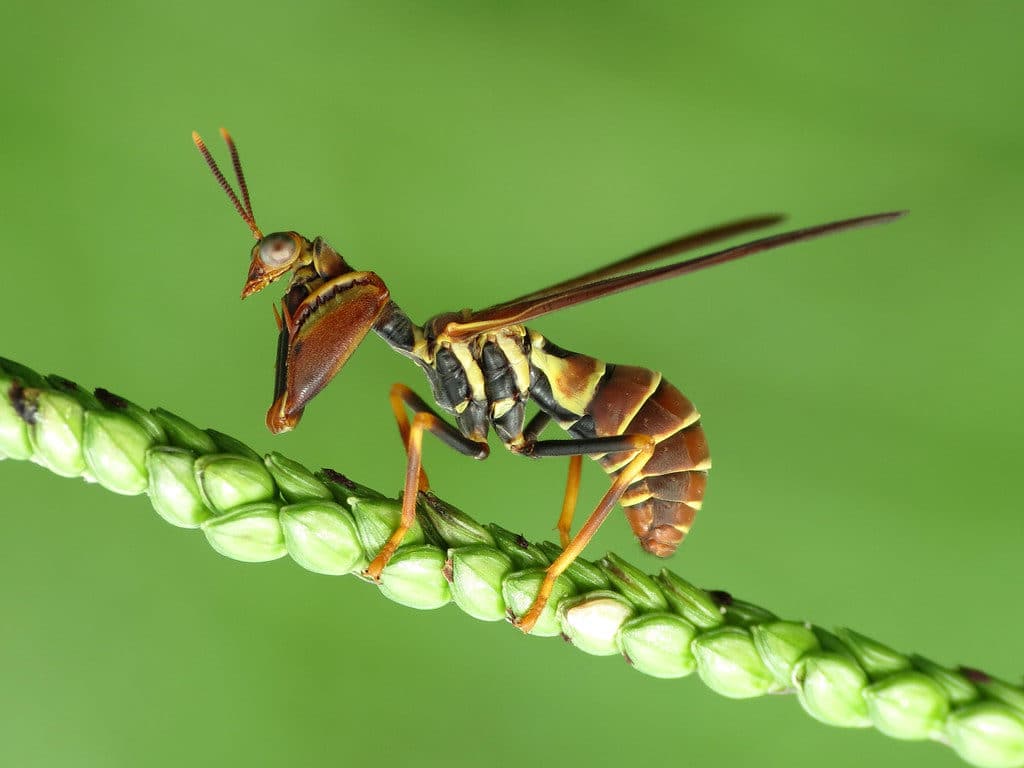Polk County’s Most Wanted – Insect Order Neuroptera

Have you seen species from an interesting order of our insect fauna, Neuroptera (“Nerve-wings”) which include Mantidflies and Owlflies?
In a joint effort to expand the knowledge and understanding of the flora and fauna of Polk County, Conserving Carolina and botanist/ecologist David Campbell need your help in locating this month’s “Polk County’s Most Wanted—Animals,” an interesting order of our insect fauna, Neuroptera (“Nerve-wings”) which include Mantidflies and Owlflies.
Mantidflies (Family Mantispidae) and Owlflies (Family Ascalaphidae) are members of the worldwide group of insects that includes the familiar Antlions and Lacewings. Referred to commonly as “Nerve-wings” due to veined structures on their wings, this is an assemblage of insects with many odd species and unique life histories.
Mantidlfies, as their name suggests, bear a striking resemblance to Mantids, due to the presence of strong raptorial “claws” in both groups (an interesting example of parallel evolution). In our region there are several species of Mantidflies, one of which, Climaciella brunnea, mimics the stinging wasps of the genus Polistes. Mantidflies are found on flowers in old fields, gardens, and woodland edges from mid-spring to late summer. Mantidflies are typically predaceous on smaller insects as adults. The life history of Mantidflies is fascinating, a female lays many hundreds of eggs on vegetation, then the eggs hatch into active larvae which seek out the egg sacs of spiders. The larvae then feeds on the eggs within the spider egg sac and eventually, a large Mantidfly emerges instead of baby spiders. Mantidlfies are often attracted to lights at night.
Owlflies, a lesser known group overall, look like dragonflies except they bear very long antennae. Larval Owlflies resemble Antlion larvae (“Doodlebugs”), but unlike Antlions, they do not construct pitfall traps in sand; rather they are free-living and predatory. Consequently, Owlfly larve are hard to find. As with Mantidlfies, Owlflies are often attracted to lights or seen flying among vegetation in old fields or lightly wooded areas throughout the spring and summer months.

Very little is known about the abundance or distribution of these insects. Even though you may have never seen a Mantidfly or Owlfly, chances are good you live near one or more of these species. Take some time to slow down and look on the blossoms of plants or around outdoor lights at night, you might be rewarded with a glimpse of this fascinating and ancient group of insects.
What can you do?
Please record any observations that you might have of Mantidlfies or Owlflies in Polk County (preferably with an image) and email them to Pam Torlina at Conserving Carolina by email at [email protected], so we can document its occurrence in Polk County.
For more information
Visit Conserving Carolina’s website, conservingcarolina.org/polk-most-wanted, for more information about “Polk County’s Most Wanted” and to download and print a “Pocket Guide” with all of the “Most Wanted” plants, animals, and habitats that you can be on the lookout for when you’re out in the field!
A Biological Inventory of Polk County
Now available for purchase on Amazon or free download: “An Inventory of the Significant Natural Areas of Polk County, North Carolina,” a culmination of David Campbell’s seven years in the field documenting the rare and significant flora and fauna in Polk County. The document can be downloaded from Conserving Carolina’s website at conservingcarolina.org/polk-county-inventory.